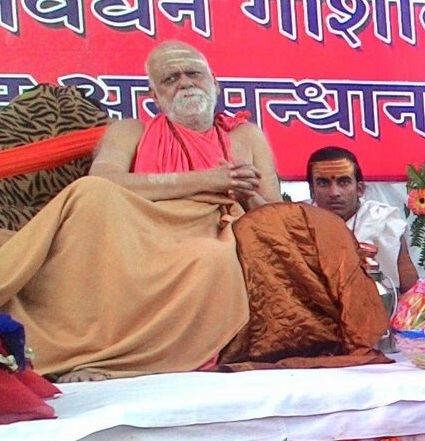 | ||
Shankaracharya (IAST: Śaṅkarācārya, Shankara acharya) is a commonly used title of heads of monasteries called mathas in the Advaita Vedanta tradition. The title derives from Adi Shankara, an 8th-century CE reformer of Hinduism. He is honored as Jagadguru, a title that was used earlier only to Krishna.
The popular view among historians is that there were four mathas (religious orders):
Shankaracharya is also seen as an avatar of Shiva (Shankara). Shankaracharya is responsible for founding many punyakshetras along the length and breadth of India, by taming avatars of Parvati and imprisoning her essence in Sri Chakras.
Adi Shankaracharya wished to grace the Indian subcontinent by establishing four major mathas in the four corners of the peninsula – north (Jyothirmath), south (Sringeri), east (Puri), west (Shāradā) – to propagate the philosophy of advaita vedanta and to promulgate the concept of Sanatana dharma, thus establishing dharma or righteousness, as the way of life of people. His primary four disciples took charges of each math and thus established a strong Guru-Sishya parampara (a lineage of masters-disciples) in every math, that continues to guide people to this day.
